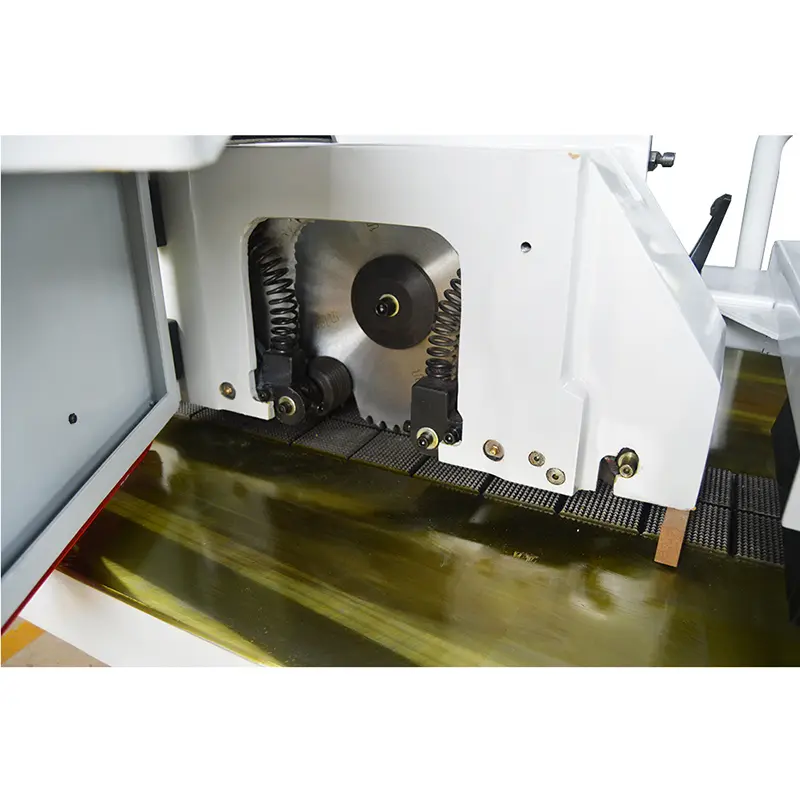Efficiency of single-sided planer: How to improve wood processing productivity
In today’s highly competitive wood processing industry, single-sided planer is a key woodworking machine. Its efficiency directly affects production costs, product quality and the profitability of enterprises. For international wholesale buyers, choosing an efficient and reliable single-sided planer is the key to ensuring supply chain stability and product quality. This article will explore the efficiency of single-sided planers in depth, analyze its influencing factors, and provide some optimization suggestions to help you better select and use single-sided planers and improve productivity.
1. Definition and importance of efficiency of single-sided planers
The efficiency of single-sided planers can be defined from many aspects, including processing speed, processing accuracy, equipment utilization, energy efficiency, and ease of operation. An efficient single-sided planer can complete the processing of a large amount of wood in a short time while ensuring the stability and consistency of processing quality. This is especially important for international wholesale buyers, because they usually need to process a large number of orders in a short time while ensuring product quality and delivery time.
2. Factors affecting the efficiency of single-sided planers
(I) Equipment performance
Motor power and speed
Motor power is one of the key factors affecting the efficiency of single-sided planers. Generally speaking, the greater the power, the stronger the cutting ability of the planer and the faster the processing speed. For example, some high-speed single-sided planers use 1.5KW motors, which can easily handle various types of wood. In addition, the spindle speed will also affect the processing efficiency. Higher speeds can increase cutting speeds, but the stability and energy consumption of the equipment also need to be considered.
Planer quality and configuration
The quality and configuration of the planer directly affect the processing accuracy and efficiency. High-quality planers can remain sharp and reduce cutting resistance, thereby increasing processing speed. In addition, the number and arrangement of planers will also affect the processing effect. For example, some new single-sided planers use a multi-blade design, which can complete more complex processing tasks at one time.
Feed system
The accuracy and stability of the feed system are crucial to processing efficiency. An efficient feed system can ensure that the wood passes through the planer at a constant speed, reducing pauses and errors during processing. Some modern single-sided planers are equipped with automatic feeding devices, which can automatically adjust the feeding speed according to the thickness of the wood and processing requirements.
(II) Operational convenience
Automation degree
The higher the degree of automation, the easier the operation and the higher the efficiency. For example, some single-sided planers are equipped with automatic loading, automatic feeding and automatic unloading devices, which greatly reduce the time and labor intensity of manual operation. In addition, automated equipment can also improve processing accuracy and reduce human errors.
Safety protection
Safety protection devices can not only protect the safety of operators, but also improve work efficiency. For example, a single-sided planer equipped with a safety guard can prevent wood chips from splashing and accidental injuries from knives, reducing downtime caused by safety accidents.
(III) Energy efficiency
The energy efficiency of a single-sided planer directly affects the operating costs of the enterprise. Efficient equipment can reduce energy consumption while ensuring processing efficiency. For example, by optimizing the motor design and transmission system, the consumption of useless work can be reduced and the overall energy efficiency of the equipment can be improved.
3. Strategies to improve the efficiency of single-sided planers
(I) Equipment selection
Choose the right model
Choose the right single-sided planer model according to your processing needs and production capacity. For example, if you mainly process thicker wood, you can choose a model with higher power and slower feed speed. If you need to process a large number of thin plates, you can choose a high-speed, high-precision model.
Consider the reliability of the equipment
Choosing equipment with well-known brands and reliable quality can reduce equipment failures and maintenance time and improve equipment utilization. In addition, some equipment manufacturers provide comprehensive after-sales service and technical support, which can help you solve problems in equipment operation in a timely manner.
(II) Equipment maintenance and care
Regular maintenance
Regular maintenance and care of the equipment can extend the service life of the equipment and improve the operating efficiency of the equipment. For example, regularly check the wear of the motor, transmission system and planer, and replace damaged parts in time.
Optimize equipment parameters
According to different processing tasks, optimize the operating parameters of the equipment, such as motor speed, feed speed and planer pressure. By reasonably adjusting these parameters, the processing efficiency can be improved while ensuring the processing quality.
(III) Operation training
Employee training
Systematic training is provided to operators to familiarize them with the operation procedures and precautions of the equipment, so that they can operate the equipment correctly and avoid equipment failure and processing errors caused by improper operation.
Safety education
Strengthen safety education, improve the safety awareness of operators, and ensure the safe operation of the equipment.
4. Future development trend of single-sided planers
With the continuous advancement of science and technology, single-sided planers are also constantly developing and innovating. In the future, single-sided planers will develop in the direction of intelligence, automation and efficiency. For example, some new single-sided planers have been equipped with intelligent control systems that can automatically adjust the operating parameters of the equipment according to the characteristics and processing requirements of the wood. In addition, with the application of new materials and new processes, the performance and efficiency of single-sided planers will be further improved.
5. Summary
The efficiency of single-sided planers is an important indicator in the wood processing industry. Factors affecting its efficiency include equipment performance, ease of operation and energy efficiency. By selecting suitable equipment, strengthening equipment maintenance and optimizing the operation process, the efficiency of single-sided planers can be effectively improved, production costs can be reduced and product quality can be improved.
Post time: Jul-11-2025

